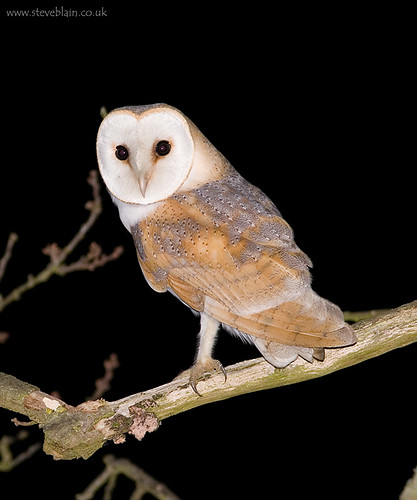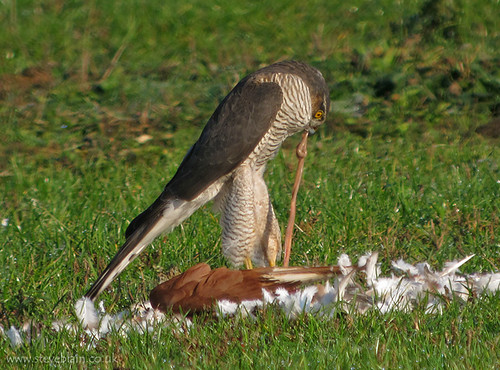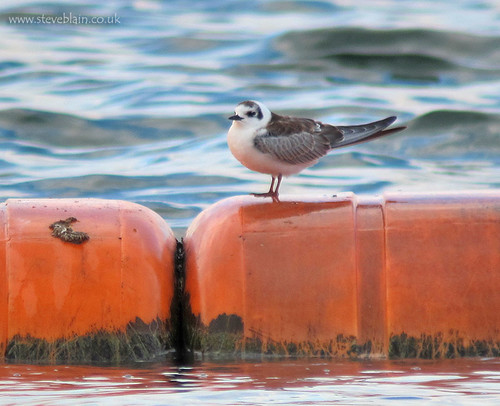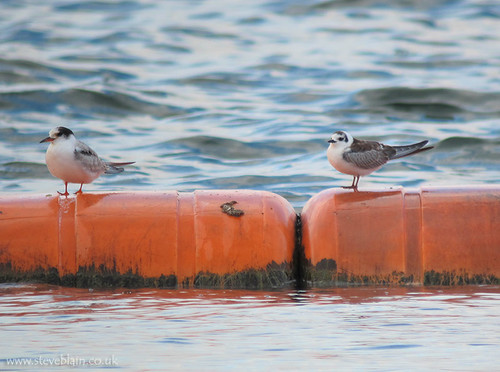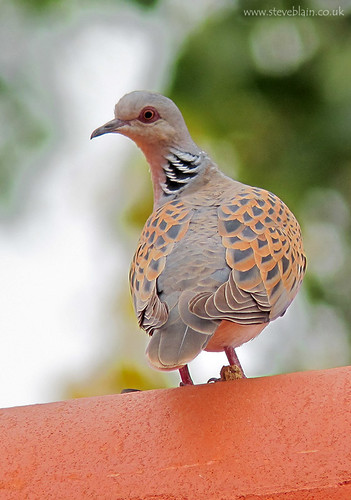Wednesday, 28 December 2011
Wol
Sunday, 20 November 2011
Sparrowhawk
Spent a few minutes watch this Sparrowhawk rip apart a Feral Pigeon at Derek's this afternoon. I'm really quite pleased with the digiscoped shots I got too.
Thursday, 10 November 2011
Murmuration
Friday, 4 November 2011
Azorean type Gull video
Azorean type Yellow-legged Gull from Steve Blain on Vimeo.
Some video of the second Azorean type Yellow-legged Gull at Stewartby Tip, October 2011
Posted by
Steve Blain
at
20:54
0
comments
![]()
Labels: 20-60x zoom, Azorean Gull, Canon S90, Swarovski ATS 80 HD, video
Saturday, 29 October 2011
Another hooded Yellow-leg
EDIT - some more images of this bird can be found on my Flickr here. These were taken Sunday morning in slightly better light.
Posted by
Steve Blain
at
20:19
0
comments
![]()
Labels: 20-60x zoom, Canon S90, Stewartby, Swarovski ATS 80 HD, Yellow-legged Gull
Friday, 23 September 2011
Azorean in flight
Some more shots of the Beds Azorean Gull - I hope Martin Palmer doesn't mind me using them! They show nicely the darker bar on the underwing, as well as P10 perhaps half grown, and P9 three-quarters grown. They also show the bar on P5 - but perhaps a little too fuzzy to see if there is anything on P4. You can also see the legs, but getting accurate colour is a bit tricky - but they don't look startlingly yellow!
Wednesday, 21 September 2011
Azorean teaser
 |
| Note P10 still growing and with a small mirror. Impossible to see P9 here but that's still growing too |
 |
| The Azorean type is at around 11 o'clock from the centre of the image. It's mantle is far darker than any Yellow-legged or Herring Gull, and yet paler than the surrounding Lesser BB's |
 |
| It's big. And dark. |
So what do I need to nail it? Better views and lots more video! I guess I'll be back at Stewartby again tomorrow...
Posted by
Steve Blain
at
21:33
2
comments
![]()
Labels: 20-60x zoom, Azorean Gull, Canon S90, Swarovski ATS 80 HD
Thursday, 15 September 2011
Pure Azure?
Very interesting bird! Does this Azure Tit look-a-likey have some Blue Tit in it? What's it doing in Buckinghamshire, in late August-early September? Do people keep them as cage birds? Lots of questions surround this bird however stunning it looks.
Edit - so it would appear, thanks to local birders investigations, this is an escaped Yellow-breasted Tit. Close, but no Arctic cigar!
Posted by
Steve Blain
at
10:30
1 comments
![]()
Labels: 300mm IS f.4, Azure type Tit, Bird Porn, Canon 400D
Wednesday, 14 September 2011
See two Grey Phals, get a Sabs free!
Posted by
Steve Blain
at
21:27
0
comments
![]()
Labels: 20-60x zoom, Bird Porn, Canon S90, digiscoping, Grey Phalarope, Sabines Gull, Swarovski ATS 80 HD
Wednesday, 7 September 2011
The Big Year
Here's the trailer for The Big Year - a film based on Mark Obmascik’s book of the same name. Will it be a hit? Will it make birding cool? I doubt it.
Sunday, 14 August 2011
Defecting
Not a bad evening's birding over the border in Cambridgeshire - juvenile White-winged Black Tern, female Garganey, three Yellow-legged Gulls, Ruddy Shelduck, 4 Ruff, Greenshank, and a Green Sand.
In Beds this morning, a long walk round Pegsdon Hills produced an elusive male Redstart and a good flock of c.150 Goldfinches. Later in Rookery 4 Ruff, and two Tundra Ringed Plovers were the highlights from the fast-disappearing muddy edged pool.
Posted by
Steve Blain
at
21:12
1 comments
![]()
Labels: 20x eyepiece, Bird Porn, Canon S90, Swarovski ATS 80 HD
Friday, 12 August 2011
Turtle Dove, Devon Drive
I've heard Turtle Dove purring twice in the four months we've lived in our new house, but hadn't seen it - that was until this evening when one landed on the fence! Stunning birds, becoming rare locally, and a wonderful garden bird to boot.
Posted by
Steve Blain
at
17:53
2
comments
![]()
Labels: 20x eyepiece, Bird Porn, Canon S90, Swarovski ATS 80 HD
Thursday, 11 August 2011
South African photos
Created with Admarket's flickrSLiDR.
I've been playing with Flickr recently and added a load of old photos to it. Here is the first in a series of sets I've added - South Africa, September 2005
Monday, 8 August 2011
Larid
A thing of beauty. At least, I think so. This is the summer gull roost at Broom gravel pits. The roost generally starts to happen in mid-July and goes through to late October before dispersing. It's mainly a Lesser Black-back roost, but along with up to 2500 of these, are smaller numbers of Black-headed, Yellow-legged, and Common Gulls. Med Gulls are regular, Caspian Gulls are rare, and Herring and Greater Black-backed Gulls are virtually unheard of until late September.
Never found anything super-rare amongst them, but I live in hope. Maybe one day a Franklin's Gull will grace Broom with its presence? Just a juvvy Med Gull, 11 Yellow-legged, 1200 LBB, 400 BhG's, 2 Herring Gulls, and a Common Gull tonight. There's always tomorrow evening.
Sunday, 24 July 2011
Croak
I spent a few hours mothing at The Lodge yesterday evening (yes, I've gotten quite in to that dark art recently too), but while I was there was drawn towards the magic sound of croaking Natterjack Toads on the heath.
The sound below was taken with my Iphone 3G, IProRecorder, and Lupo mini mic, and the image above was a 4 second exposure looking from The Lodge over Biggleswade Common towards Biggleswade.
Friday, 15 July 2011
Teacher-weacher
I have fond memories of singing Rosefinches. This was one of the 'stand out' birds for me from my very first trip abroad - to Russia, at the tender age of 13, in 1992.
It was a YOC organised trip, back when they had such things, to a conference for over 100 Russian kids, as well as a group from the States, and around 10 British YOCers.
A few things stick in my mind about the conference - lots of talks (in Russian, then translated to English) about Crows, an id quiz with bird skins, the smell of Russian disinfectant (or it could have been vodka?) around the canteen, and eating raw fish.
Obviously, the best things about the conference were the birds, and the place we stayed at was superb. It was a college campus in the heart of rural Russia, around fifty miles east of Moscow. The near-by village was full of wooden houses with nest boxes for Starlings, and surrounded by fields vibrating to the sound of Corncrakes. The woodland had exciting things too - fighting Golden Orioles which tumbled to the ground, hulking and slightly ghostly Black Woodpeckers, nesting Long-eared Owls with curious squeaky-gating youngsters, difficult to see Red-breasted Fly's and Greenish Warblers in the canopy. The river, with its rather deadly looking wooden bridge you had to cross, had breeding Common Gulls, with River Warblers, and Blyth's Reed Warblers singing from the lush growth along its edges. One day was spent in the marshes, a short bus trip away. These had hordes of White-winged Black Terns dipping over the pools, and I remember walking through a meadow with whickering Black-tailed Godwits shimmying overhead. A male Citrine Wagtail singing from an earth clod was blindingly bright, and a Terek Sandpiper scooted off a scrape of water as we passed by. It was an unbelievably top trip, and undoubtedly sparked my interest in foreign birding.
Oh yes, and there were oodles of breeding Scarlet Grosbeaks, as we called them back then. The Russians apparently called them 'Teacher-weacher' birds because of their lovely simple song. Hearing the, unfortunately rather dowdy, Fowlmere bird singing from its favourite tree brought all these memories flooding back.
Posted by
Steve Blain
at
06:38
1 comments
![]()
Labels: 30x eyepiece, Canon S90, Common Rosefinch, digiscoping, Swarovski ATS 80 HD, video
Thursday, 2 June 2011
Swiftly does it
 |
| Swift over Broom, May 2007 |
Please help us help Swifts.
Thursday, 26 May 2011
Wiggle it, just a little bit
Displaying Wood Whites from Steve Blain on Vimeo.
Spent a great few hours looking for these chaps in Northants last weekend. Wood Whites at Salcey Forest. The male does a great little display over the female - it wiggles its antennae and shakes its proboscis over the head of the female while occasionally flicking its wings. Totally absorbing to watch.
Spotted in Milton Keynes
Spotted Sandpiper at Caldecote Lake, Milton Keynes from Steve Blain on Vimeo.
A lovely local bird, just a shame it was in Bucks. Wonder where it is now?
Posted by
Steve Blain
at
18:33
0
comments
![]()
Labels: 20-60x zoom, Canon S90, digiscoping, Spotted Sandpiper, Swarovski ATS 80 HD, video
Monday, 23 May 2011
Rare breeder
Thursday, 19 May 2011
Coot it be magic?
 It always pays to be vigilant. This colour-ringed Coot was on a drain next to a main path around Fen Drayton Lakes RSPB reserve. CV was originally ringed on 26th October 2005 at Radipole Lake in Dorset. It hadn't been reported anywhere other than there (but last seen 20th December 2010) until I found it at Fen Drayton on 24th April 2011!
It always pays to be vigilant. This colour-ringed Coot was on a drain next to a main path around Fen Drayton Lakes RSPB reserve. CV was originally ringed on 26th October 2005 at Radipole Lake in Dorset. It hadn't been reported anywhere other than there (but last seen 20th December 2010) until I found it at Fen Drayton on 24th April 2011!
Apparently its only the second colour-ringed Coot that has been recorded in East Anglia from Radipole, with the other turning up on the Orwell Estuary in Suffolk.
Many thanks to Terry Coombs and the Radipole Ringing Group for all the information.
Posted by
Steve Blain
at
07:25
0
comments
![]()
Labels: 20-60x zoom, Canon S90, Coot, digiscoping, Swarovski ATS 80 HD
Wednesday, 18 May 2011
Yellow bunting

 This Yellowhammer was holding territory at Broom GP earlier in the spring. It's interesting rufous moustascial stripe reminded me of some photographs I'd seen on Martin Garners blog here. However, looking through Google Images, this is perhaps just natural variation in male Yellowhammer plumage?
This Yellowhammer was holding territory at Broom GP earlier in the spring. It's interesting rufous moustascial stripe reminded me of some photographs I'd seen on Martin Garners blog here. However, looking through Google Images, this is perhaps just natural variation in male Yellowhammer plumage?Monday, 16 May 2011
It's a mystery
A dead ringer



 Not actually dead, but a close call for a drake Ring-necked Duck. This bird is a hybrid Ring-necked Duck x Tufted Duck, Dunstable Sewage Works, 15th May 2011.
Not actually dead, but a close call for a drake Ring-necked Duck. This bird is a hybrid Ring-necked Duck x Tufted Duck, Dunstable Sewage Works, 15th May 2011.On first glance it shows the sweeping grey flanks, white edged base and ring to the bill, and the high crown of a Ring-necked, but look a bit closer and thing don't start to add up
- The 'high crown' becomes a bit of a tuft
- the sweeping grey flanks aren't sweeping enough, and don't end with a clear white stripe towards its chest
- The bill pattern isn't strong enough, with a very weak sub-terminal band and white basal surround
- A green sheen to the head
There are some good comparison photos on Flickr here, on RadioactiveRobins here, on Dave Browns blog here, and on the Birdwatch Irelands website here.
Posted by
Steve Blain
at
07:34
0
comments
![]()
Labels: 20-60x zoom, Canon S90, digiscoping, Hybrid, Swarovski ATS 80 HD
Thursday, 14 April 2011
leucorhoa
 'Greenland' Wheatear, Biggleswade Common, 9th April 2011. This bold, bright bird turned up with a obviously more sleek and demour male. It appears that 2011 has seen a very early push of these apparent 'Greenland' Wheatears, with similar birds turning up all over the country during the last week. The (ropey) image below shows the difference between the two males - striking, isn't it!
'Greenland' Wheatear, Biggleswade Common, 9th April 2011. This bold, bright bird turned up with a obviously more sleek and demour male. It appears that 2011 has seen a very early push of these apparent 'Greenland' Wheatears, with similar birds turning up all over the country during the last week. The (ropey) image below shows the difference between the two males - striking, isn't it!
Posted by
Steve Blain
at
07:49
0
comments
![]()
Labels: 20x eyepiece, Bird Porn, Canon S90, digiscoping, Swarovski ATS 80 HD, Wheatear

